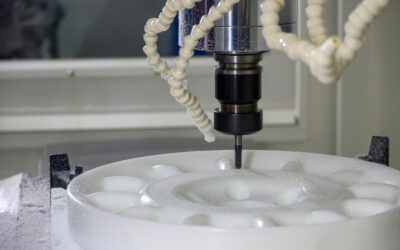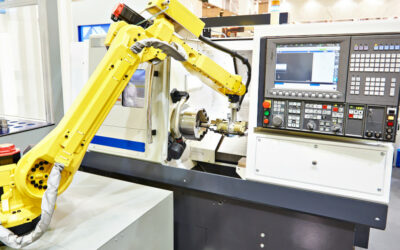Humans’ energy needs were modest before the industrial revolution. For example, we were happy to utilize energy from the sun for heat, horses for transportation, the power of the wind to sail around the globe, and water to drive simple machines that grind grains. Everything changed in the 1780s, with high growth in steam power generation plants, of which most of their components were fabricated using high-speed lathes.
But as the energy needs continued to grow since rapid industrialization began, energy systems and technologies became more sophisticated. As a result, it became more challenging for manufacturers to meet the manufacturing requirements of the energy industry until the advent of CNC machining technology in 1952.
In this article, we will cover CNC machining in the energy industry. We will present three things you must know about CNC machines and their role in today’s energy sector. So let’s get right into it!
#1 CNC Machining is Helping to Fabricate Hydropower Turbines and Generator Components
Hydropower turbines and generators are massive, consisting of hundreds of thousands of components. These components vary in design and size, with some components smaller than your index finger and others larger than the size of a car. Regardless of the variation in size, one key requirement is that these components are machined accurately and precisely to ensure seamless assembly.
CNC machines are among the key machining technologies that product designers use in the energy industry to satisfy these requirements. For example, Canyon Hydro (one of the leading manufacturers of Pelton and Francis hydroelectric turbines) relies on a 7-axis CNC milling machine to fabricate the majority of the components that make up their 36-ft-long and 25-ton hydroelectric systems.
The reason for this high dependence on CNC machines is understandable. First, CNC machines can machine to tolerances as small as 4µm, which pretty much is the tolerance limit you’d find in many hydropower components and parts (like simple shafts, impellers, and bushing). Second, multi-axis CNC machines are particularly suitable for fabricating extremely large and complex geometries.
But CNC machines’ applications aren’t limited to the renewable energy industry.
#2 CNC Machining is Helping to Fabricate Difficult-to-Machine Materials in the Conventional Generators and Turbines
Like the hydropower systems, conventional turbines and generators — which rely on fossil fuels to generate power — feature thousands of components. However, unlike the renewable energy systems, conventional generator components are subjected to extremely high thermal conditions of up to 2300℉, causing engineers to rely on high-strength and thermal resistance materials for these components.
Finding a material with high strength and thermal resistance isn’t a problem for product designers. Instead, the challenge is finding a suitable manufacturing method for these metals. For example, a high-strength material like titanium and its alloys has poor (or average) machinability and is prone to chatter during metal cutting.
Because of CNC machines’ compatibility with a broad range of materials, manufacturers rely on them to fabricate difficult-to-machine metals found in conventional generators and turbines. For instance, skilled machinists usually CNC machine titanium with recommended cutting speeds of 59 m/min for roughing and over 180 m/min for finishing operations.
Learn more about the difference between feed rate vs. cutting speed.
#3 CNC Machining is Contributing to the Research on Solar and Wind Power Systems
Solar and wind power systems are slowly taking center stage across the globe, replacing conventional energy systems that rely on fossil fuels and contribute to climate change. As a result, research studies are being done to improve the efficiency and performance of these systems. For example, some research scientists are investigating the energy efficiency and performance of novel wind turbine blade designs and solar panels.
And as you may have guessed, CNC machines are among the technologies used for rapid prototyping the blades and solar panels used in most of these research studies. A major reason for this preference is the ease of modifying designs in CNC machining.
With CNC machining, you only need to modify dimensions on your 3D CAD software, and a CNC machinist will have no problem fabricating your new blade (or solar panel designs) quickly. This is not the case with conventional manufacturing methods like injection molding, where you have to start all over by recreating molds.
(Related Post: Should You Use CNC for Rapid Prototyping? The Advantages and Disadvantages)
CNC Machining for the Energy Industry: Gensun Can Help
Now that you understand the role of CNC machining in the energy industry today, you’d agree that CNC machining has been an essential manufacturing method since the industrial revolution. But as much as CNC machines simplify energy parts machining, the success of your project also depends on the machine shop you work with.
You want to work with a machine shop with top-of-the-line CNC machines as well as highly experienced CNC machinists, engineers, and quality control experts.
Gensun Precision Machining has been in business for nearly two decades, providing high-quality CNC machining services to customers in the energy industry. We have state-of-the-art CNC equipment, and our engineers are capable of getting your product done right the first time.
Learn more about our CNC machining services.



